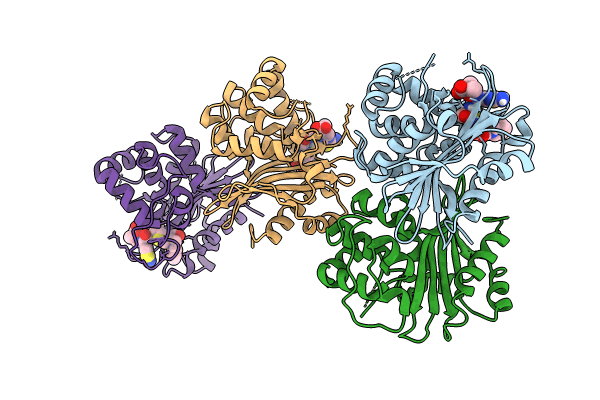
Deposition Date
2023-06-13
Release Date
2024-02-14
Last Version Date
2025-10-01
Entry Detail
PDB ID:
8PEC
Keywords:
Title:
OXA-48_Q5-CAZ. Epistasis Arises from Shifting the Rate-Limiting Step during Enzyme Evolution
Biological Source:
Source Organism:
Klebsiella pneumoniae (Taxon ID: 573)
Host Organism:
Method Details:
Experimental Method:
Resolution:
2.66 Å
R-Value Free:
0.27
R-Value Work:
0.20
R-Value Observed:
0.20
Space Group:
P 61


